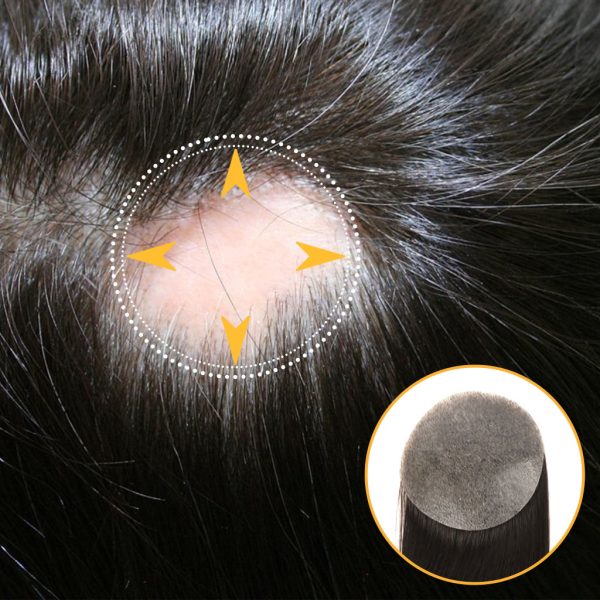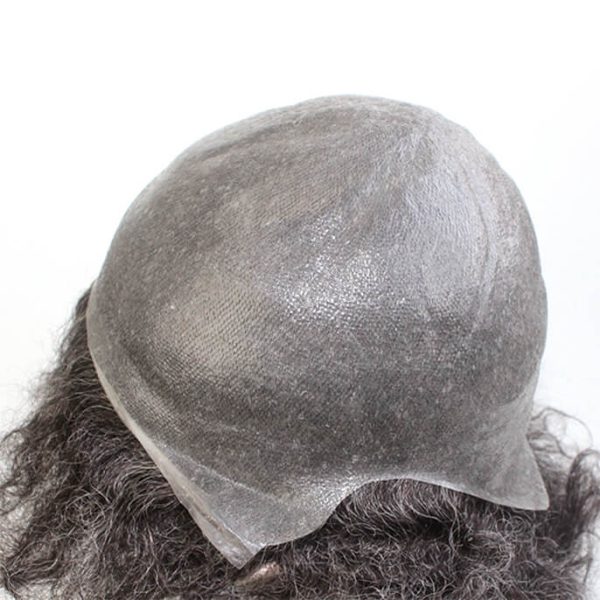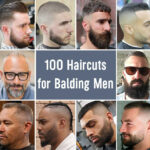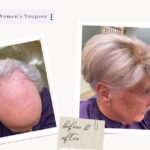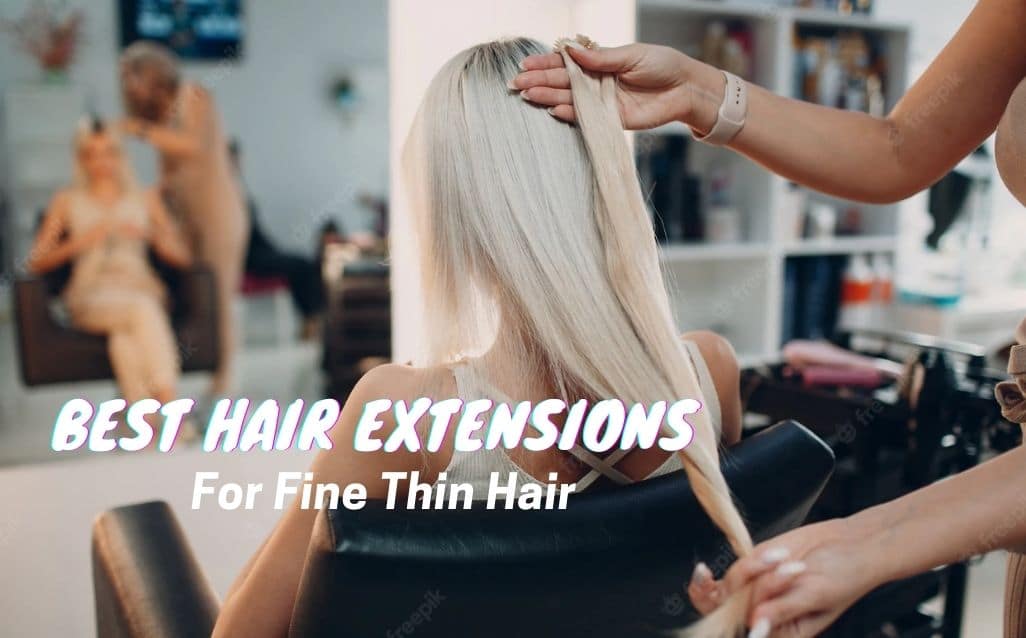Whether you’ve thought about wearing or selling hair systems or not, you’ve probably looked up “thin skin hair systems.” When you first heard about thin skin hair systems, your thought might be, “Skin?” Is it something to do with leather? No, it doesn’t.
As one of the most sought-after hair systems to fight hair loss, thin skin hair systems have nothing to do with leather. The word “skin” here purely means the material that resembles our skin, or viable epidermis, to be exact, the very top, thin, whitish superficial layer of our skin that doesn’t contain any nerve endings.
- 1. What Is a Thin Skin Hair System?
- 2. Types of Thin Skin Hair Systems
- 3. Pros and Cons of Thin Skin Toupees
- 4. Lace vs. Poly Hair System
- 5. How Much Does a Poly Hair System Cost?
- 6. How Long Do Thin Skin Hair Systems Last?
- 7. How to Attach a Thin Skin Hair System?
- 8. How Often Should You Reinstall Thin Skin Hair Systems?
- 9. How to Remove and a Clean Thin Skin Hair System?
- 10. Why Is My Hair System Shedding? What Shall I Do?
- 11. Why Doesn’t My New Hair System Stick to the Tape? What Shall I Do?
- 12. Conclusion
What Is a Thin Skin Hair System?
To know what a thin skin hair system is, let’s first get familiar with what a skin hair system is. Skin hair systems, also called poly hair systems, toupee, or hairpiece, is a typical men’s hair replacement system consisting of a poly base and tens of thousands of hairs that are either knotted or injected into the base.
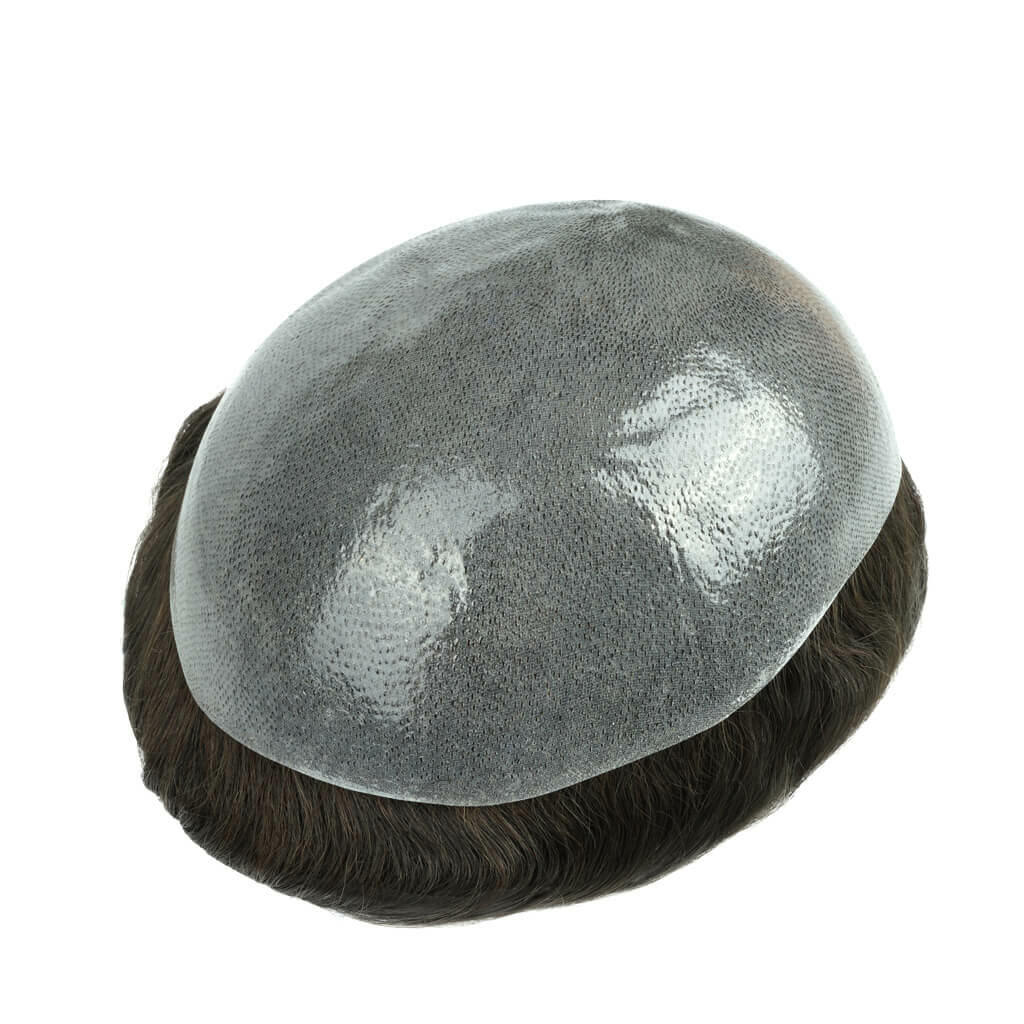
To put on a hair system, a qualified stylist usually puts tape or glue on the bottom of the base and sticks it to the cleanly shaved head of the wearer. Now the dude has a full head of lush hair.
Thin Skin Hair Systems Are a Type of Skin Hair Systems
A “poly skin hair system” is the type that has a base made of a proprietary blend of thin layer of polymers to create a feather-light translucent membrane. The membrane resembles our epidermis in many ways. You or your client’s scalp will show through it. With the tens of thousands of hairs injected into the skin base, your skin hair piece is made.
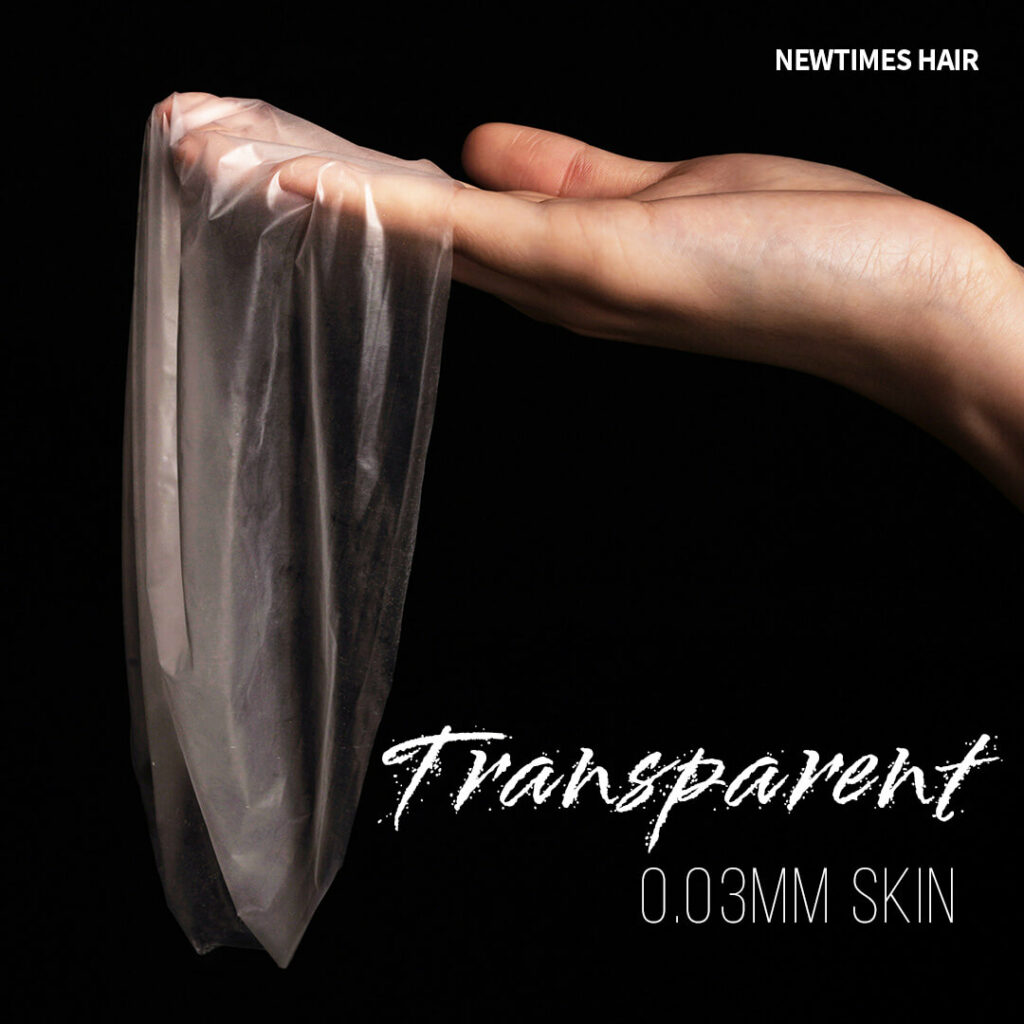
Have you figured out what a thin skin hair system is now? A “thin skin hair system” or “thin skin toupee” simply means a skin hair system with a thin base.
How Thin is Thin?
Skin hair pieces are considered thin if their base is between 0.02 and 0.1 mm thick, among which the 0.02-0.03mm poly skin is sometimes called ultra-thin.
- Note: Technology has helped us easily create the ultra-thin 0.02mm poly hair system. However, thinner doesn’t necessarily mean better or worse. It all depends on what features you or your client try to achieve. The thinner the skin, the lighter and more natural the hair system is. Whereas the thicker the skin, the longer the hair system lasts.
From 0.12-0.14mm, we call them medium thin, and from 0.16-0.18mm, we call them thick. There are other types of poly skin bases, too, like poly with gauze and poly coating, which we usually use to strengthen the lace or mono hair systems.
The list below will help you fully understand base thicknesses:
Clear Skin | thin skin | 0.02-0.1mm |
medium skin | 0.12-0.14mm | |
thick skin | 0.16-0.18mm | |
Poly with gauze | thin gauze with a layer of poly, used as perimeter or whole base | |
Poly coating/NPU | French lace or fine mono with a layer of poly, usually used as perimeter | |
Types of Thin Skin Hair Systems
Thin skin hair systems vary in features and base structures for different purposes. Here are some of the most popular thin-skin hair systems. Let’s count them all up.
Full Thin Skin Hair Systems for Hair Loss at the Crown
Full skin hair systems are a fundamental type of hair unit with the whole base in translucent, skin-like poly material. They are much more affordable and user-friendly compared to lace hair systems.
Full skin hair systems can be attached in multiple ways, such as using tapes, adhesives, etc. They are easy to handle and maintain. That’s why they are a great option for wearers beginning to wear hair systems. The most commonly used thin skin hair systems or toupees for men are 0.06-0.08 mm hair systems.
-
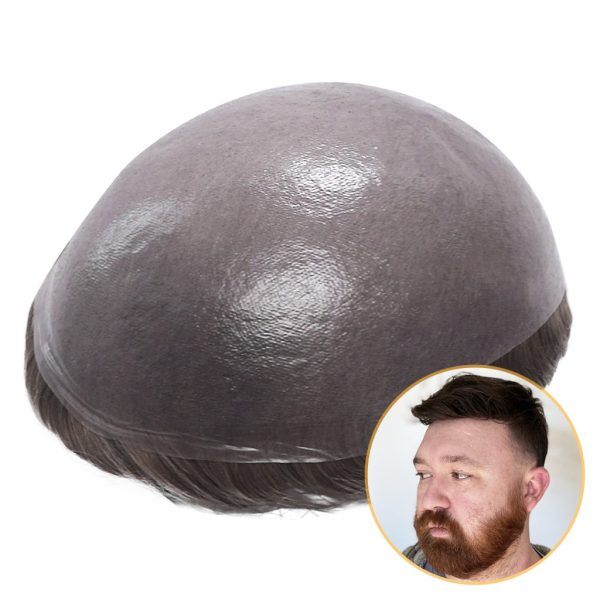 HS1V V-Loop Hair System Wholesale 0.06 mm Transparent Poly Thin SkinRated 5.00 out of 5 based on 14 customer ratings
HS1V V-Loop Hair System Wholesale 0.06 mm Transparent Poly Thin SkinRated 5.00 out of 5 based on 14 customer ratings
Thin Skin Hair Systems with a Lace Front
Full skin hair systems are great for their prices and user experience, but they can’t beat lace hair systems in terms of looking real, especially when it comes to the hairline. Thin skin bases have a natural shine along the front hairline. Many wearers are concerned about that.
That is why we add a lace front in the front of the poly base hair systems, usually 1″ from the front edge towards the back and spanning horizontally across the entire forehead is made of French lace. That’s why we call them “lace front hair systems” or lace front wigs.
The lace front makes the thin skin hair system base absolutely undetectable at the front. Their knots can also be bleached to give an absolutely natural look.
With the help of the lace front, the hair system creates a most realistic hairline, which makes all pull-back hairstyles possible, and the wearer may save quite a bit.
HS15+ Men’s Lace Front Thin Skin Hair System is an excellent example.
-
Sale Product on sale
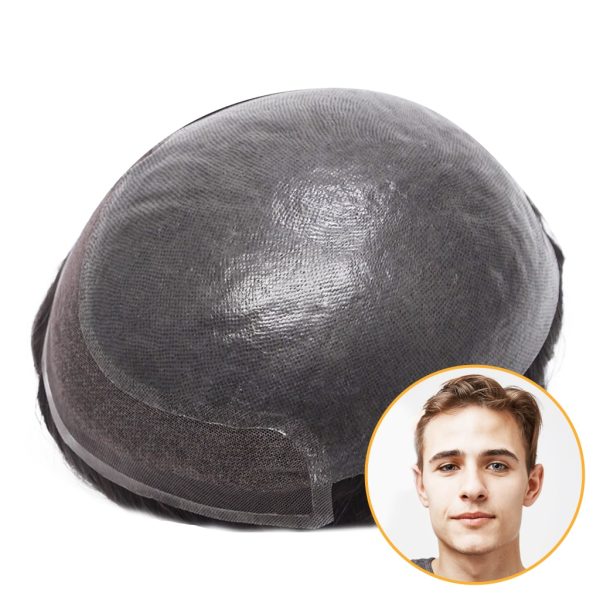 HS15+ Men’s Lace Front Hairpiece for Wholesale 0.08 mm Super Thin SkinRated 5.00 out of 5 based on 12 customer ratings
HS15+ Men’s Lace Front Hairpiece for Wholesale 0.08 mm Super Thin SkinRated 5.00 out of 5 based on 12 customer ratings
Poly Base Frontal Hair System for Receding Hairlines
Thin skin hair systems are easy to attach, clingy, and ideal for beginners. Frontals cover only the forehead. Before reaching age 50, most men will start to develop a receding hairline. Hair frontals are primarily made for people whose hairlines are thinning and the rest of their head is still full of hair. A PU-hair frontal makes it the most straightforward to wear and saves the wearer more money.
PU frontals at New Times Hair will show you how a PU frontal hair system works best.
-
 PU FRONTAL Men’s Frontal Hair Piece for Receded Hairline WholesaleRated 4.86 out of 5 based on 14 customer ratings
PU FRONTAL Men’s Frontal Hair Piece for Receded Hairline WholesaleRated 4.86 out of 5 based on 14 customer ratings
Thin Skin Hair Patches for Alopecia
Hair patches are designed for wearers with alopecia or bald spots over the head. As their name suggests, hair patches are also a type of hair system that covers only the patchy bald areas around the head.
As most of the wearer’s head is still covered with hair, PU hair patches are the most convenient way to have the spots covered. PU hair patches are small in size. They can be further cut to fit the bald areas perfectly.
WPT hair patches are available in different sizes to suit all sorts of hair loss patterns.
Thin Skin Full Cap Hair Systems
Different from those crown hair systems or partial hair systems, thin skin full cap hair systems cover the whole head and are designed for those with entirely bald heads.
Similar to other hair systems, full cap hair systems are attached by tapes and glues. You can also cut them into various hairstyles. It has all advantages that PU hair systems have, such as clingy, knotless hair, etc.
NJC1961 will show you more.
Pros and Cons of Thin Skin Toupees
There are always pros and cons to hair systems. Realistically, all hair systems have some qualities that are better than others. Here we’ll focus on some significant advantages and drawbacks of thin skin hair systems so you are prepared before making your first purchase for yourself or your customers.
Pros:
- Easily Attached and Easy to Clean
Thin skin toupees are easy to wear and maintain. They are the most ideal for new wearers. Add adhesive or tape to the wearer’s clean-shaven, oil-less scalp, and stick the thin skin hair system to the scalp. Done. When it comes to cleaning the hair system, the surface of the underside of the base is flat and smooth; it’s effortless to get rid of the tape or glue residue.
- Knotless Roots
Unlike lace or mono hair systems, hair gets knotted to the base in either double-split knots or double/single knots; thin skin hair systems can have their hair injected or v-looped into the base, so the hair doesn’t show any knots. All the hair looks like it’s growing out of the wearer’s natural scalp and gives a realistic look.
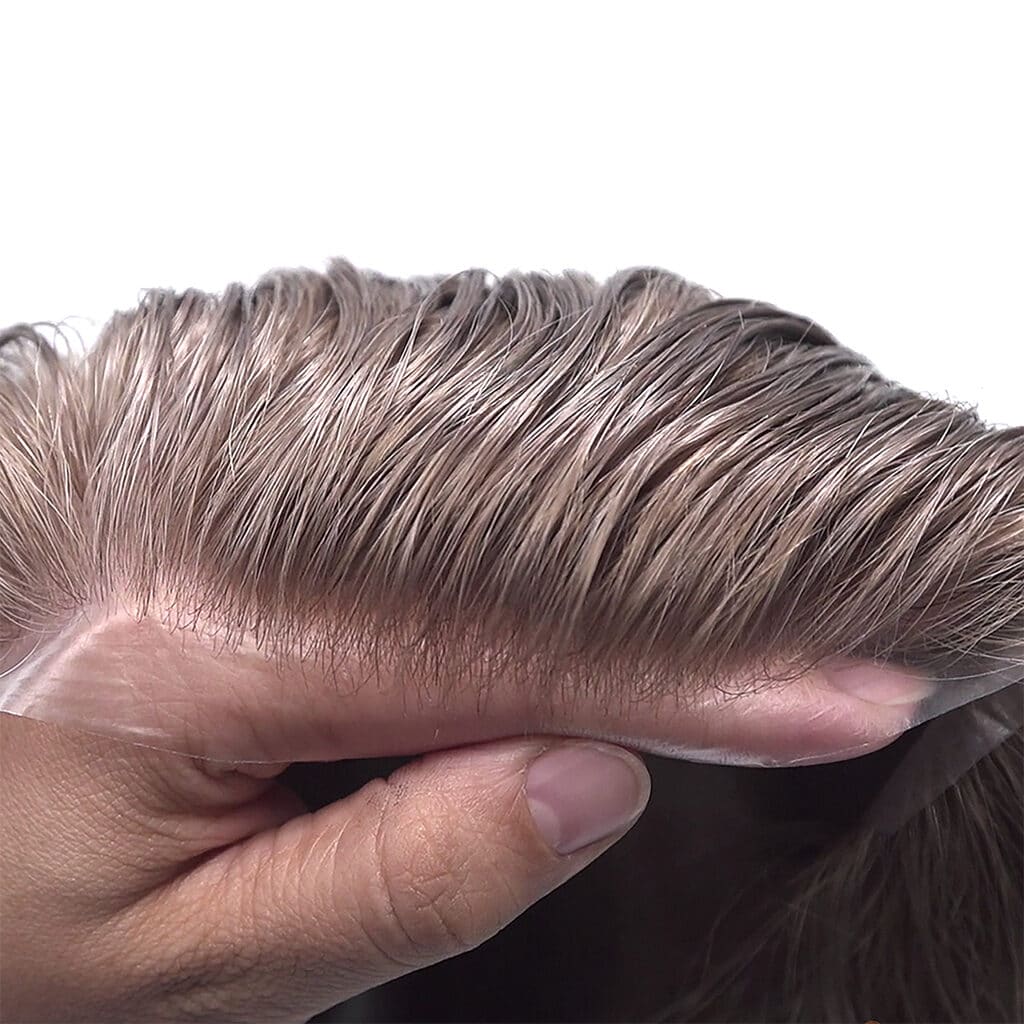
- Affordable
Each poly hair system is a money saver. As skin bases generally cost significantly less than lace or mono bases and are easy to maintain, new wearers can ideally use thin skin toupees before they can handle hair systems better and shift to other base materials.
- Durable
Well-cared-for thin skin hair systems can last considerably longer than lace hair systems, given that they are the least costly hairpieces available. 0.06-0.08 mm skin hair systems can typically last 4-6 months with proper care.
- Cuttable
Thin skin hair systems are the most adaptable hair systems among all other hair systems. They can be cut into smaller hairpieces and used as patches or frontals. Once applied, they will create the sturdiest hold.
- Clingy, Ideal for Sport Lovers
If you or your client loves some of the most extreme sports, we strongly recommend thin-skin hair systems. They create the strongest hold among all hair systems. The wearer can do almost all sports in thin skin toupees.
Cons:
- Not as Realistic as Lace
This becomes its drawback only because lace bases can better maintain a more realistic look and best breathability. Occasionally, the surface may have a whitish shine under the sunlight.
- May Not Be as Breathable
Unlike mono or lace bases, which have thousands or tens of thousands of holes, thin skin bases don’t have that many holes. That makes them less breathable compared to lace or mono hair systems. However, some of our latest poly base toupees now have bigger holes. Hair and heat can quickly come through.
Lace vs. Poly Hair System
Lace and poly hair systems, which one is better? How should I choose? As we have shared in some of our articles, there’s no such thing as the best hair system. Whatever hair system you choose is closely related to what you’re trying to achieve.
Poly skin hair systems: Having talked about all pros and cons of poly or thin skin hair systems, poly or thin skin hair systems are easy to handle, attach, and maintain, and they cost less than lace hair systems. That makes poly or thin-skin hair systems the best choice for newbies who’ve never used hair systems. Lace is more breathable than thin skin.
Lace hair systems: Lace hair systems are breathable and look the most realistic. Comfort and looking realistic are the critical qualities wearers or hair system sellers can ever want out of a hair system. The base melts seamlessly into the scalp as one and is perfectly breathable. However, lace systems are harder to maintain and cost about 1/3 more than a thin skin hair system.
Which one to choose? If you or your client seriously consider hair systems, lace hair systems are the best choice. They combine comfort and a realistic look into one, achieving the best-looking hairline and parts. However, thin-skin hair systems are sound if you are a beginner with a limited budget. Use hybrid or lace front hair systems if you want a realistic hairline and parts.
Related: Lace vs Poly Hair System
How Much Does a Poly Hair System Cost?
There are various designs of poly skin hair systems. The hair used for the hair system is also different in quality, and so are the base materials. That’s why poly skin hair systems vary greatly in their prices. On average, a poly-human hair system may cost from $100 to a thousand; it also depends on what supplier(s) unit is shipped from.
Poly base hair systems, on average last 3-4 months. You will need 3 or 4 poly hair systems annually as a wearer. Plus, for the monthly touchup or reinstallations, you need to set a budget of around $1,000-$1,800 for a year.
Related: How much Does a Men’s Hair System Cost? https://staging.newtimeshair.com/blog/how-much-does-a-mens-hair-system-cost/
How Long Do Thin Skin Hair Systems Last?
The rule is that the thicker the base, the longer the hair system lasts. However, the thinner the base, the more realistic and natural the scalp look compared to the wearer’s natural scalp.
Here’s a list of all the different skin base thicknesses for your reference.
| Base Material(Product Code) | Lifespan |
| Skin 0.02-0.03mm(HS25) | Around 4 Weeks |
| Skin 0.06mm(HS1-V) | 2-3 Months |
| Skin 0.08mm(HS1, HS15+, INS) | 3-4 Months |
| Skin 0.1mm(HS1VP, DURO INS) | 3-6 Months |
How to Attach a Thin Skin Hair System?
The steps for installing a thin skin hair system are pretty simple. First, let’s get the tools ready, doing our job twice as quickly: Comb, balder, scalp protector, scissors, white eyeliner pencil, 99% alcohol wipes/spray, and measuring tape.
Now watch and finish watching the short video.
Have you finished watching it? I take it as you have. So now I’ll save some words on this.
Step 1: Prepare the scalp. Decide which section of the scalp you want the hair system to be. At this step, you must make a template to help you divide the area where you will attach the new hair system. With this step, you need to make a template.
Read our article to know the exact steps to make a toupee template.
Step 2: Cutting the hair system base to size. Follow the edge of the template to draw the contour of the area you want the hair system to be. Locate the hairlines.
Step 3: Clean the scalp. Make sure the scalp and the underside of the base are as clean as possible and without any oil. New hair systems have gone through a process known as grease conditioning to make the hair as shiny and lustrous as possible. So new hair system bases tend to have some oil remaining. Clean it with alcohol wipes, making sure there’s not a tiny bit of oil remaining on the underside of the base and the scalp.
Step 4: Apply a scalp protector on the scalp. This step is optional. But it’s for wearers with sensitive scalps or who love swimming. It protects the scalp, secures the bond, and keeps the hair system on the head longer.
Step 5: Attach the hair system. Here come the tapes and glues. Everything is straightforward about this step. Apply adhesive or tape on the wearer’s scalp, and stick the hair system correctly, fitting precisely the area and contour where the hairpiece should be.
Step 6: Hairdressing and styling. Here is the hairdresser’s favorite step, cut the hair into styles. It’s just like cutting the wearer’s natural hair.
How Often Should You Reinstall Thin Skin Hair Systems?
We can’t prevent our natural hair growth and sweat underneath the base. The tapes and adhesives become less sticky, so the hairpiece will lift. All hairpieces will lift after being installed for a while. Typically, each hair system needs to be reinstalled once every 3-4 weeks.
However, not all hairpieces are fit for reinstallation. Ultra-thin skin hair systems (with bases 0.02 mm to 0.03 mm thick) are too thin for reinstallation. Usually, they will tear or break in the removal process and can’t be used anymore.
Hairpiece bases over 0.06mm have a thicker and stronger base. These can be reused and reinstalled.
How to Remove and a Clean Thin Skin Hair System?
The crucial part of maintaining a hair system is to remove and clean it. The steps are simple, but when you practice them, it does require attention and patience. Watch the video below and read the related article on hair system removal and scalp cleaning; you will quickly master the cleaning task.
Step 1: Spray some remover on the base, let it soak a little while, and as the hairpiece gets loose, peel it off bit by bit. If a spot remains stuck, apply more remover, letting it soak a little longer, and continue peeling. Patience is the key!
Step 2: Soak the peeled-off thin skin hair system in cool or lukewarm water.
Step 3: Lay the hairpiece flat and remove the glue or tape residue, following the video. Gently stroke it with your hands.
Step 4: For stubborn residue on the edges, use the C-22 adhesive solvent. Brush it on with a fingernail brush to loosen the residue. Then, break it free.
Step 5: Wash and shampoo the hair system, ensuring all residue is off. Then dry it with a towel.
Why Is My Hair System Shedding? What Shall I Do?
Unlike lace or mono hair systems, whose hair gets attached to the base through single, double, or double split knots, thin skin hair systems, however, usually have their hair attached to the base in v-loops; some bases have the hair injected into it to achieve a realistic-looking hairline or part.
Without knots, hair is quickly shed, especially when the wearer fails to take proper care of or abuse them.
Here are some tips to preventing hair shedding from v-looped or injected poly hair systems:
- Avoid applying conditioner and or shampoo on the base, which may loose the hair attached to the base.
- Never brush the hair when wet.
- Do not pull hard on the hair or use hair clippers when cutting the hair.
- Do not wash the hair systems in hot water or blow dry the hair system with hot air. Hot temperature will enlarge the holes where the hair goes in or out, leading to easy shedding.
Why Doesn’t My New Hair System Stick to the Tape? What Shall I Do?
Some wearers or hairstylists have the experience that no matter how much adhesive or tape they apply on the scalp, the hair system just wouldn’t stick.
That’s because before hair systems are out of the factory, they usually undergo “grease conditioning,” a process to make the hair more lustrous and shiny. That’s why cleaning the underside of the base with alcohol is essential. Ensure the base and the wearer’s scalp are absolutely 100% oil-free. Read this article to find a more detailed instructions: How to Make Tape or Adhesive Sticker for a New Hair System?
Conclusion
Thin skin hair systems are hair systems that have a base made of polymer, which is a layer or thin membrane resembling our epidermis. Hence, their name is created: “thin skin hair systems.”
The average thickness of thin skin hair systems ranges from 0.01 mm to 0.18 mm. 0.02 mm, and 0.03 mm bases are usually called ultra-thin. They typically last for 3-4 weeks and are disposable, whereas most other thin-skin hair systems can be maintained and reinstalled once every 3-6 weeks.
Thin skin hair systems usually have a lifespan of 3-6 months with proper care. The wearer must visit the salon every month for cleaning and reinstallation. They cost less and are easier to maintain than lace hair systems. Thin skin hair systems are ideal for new wearers.
Again, there’s no such thing called the best hair system. The best hair system is only what suits your or your client’s needs. Click here to shop for some of the world’s premium thin skin hair systems.
